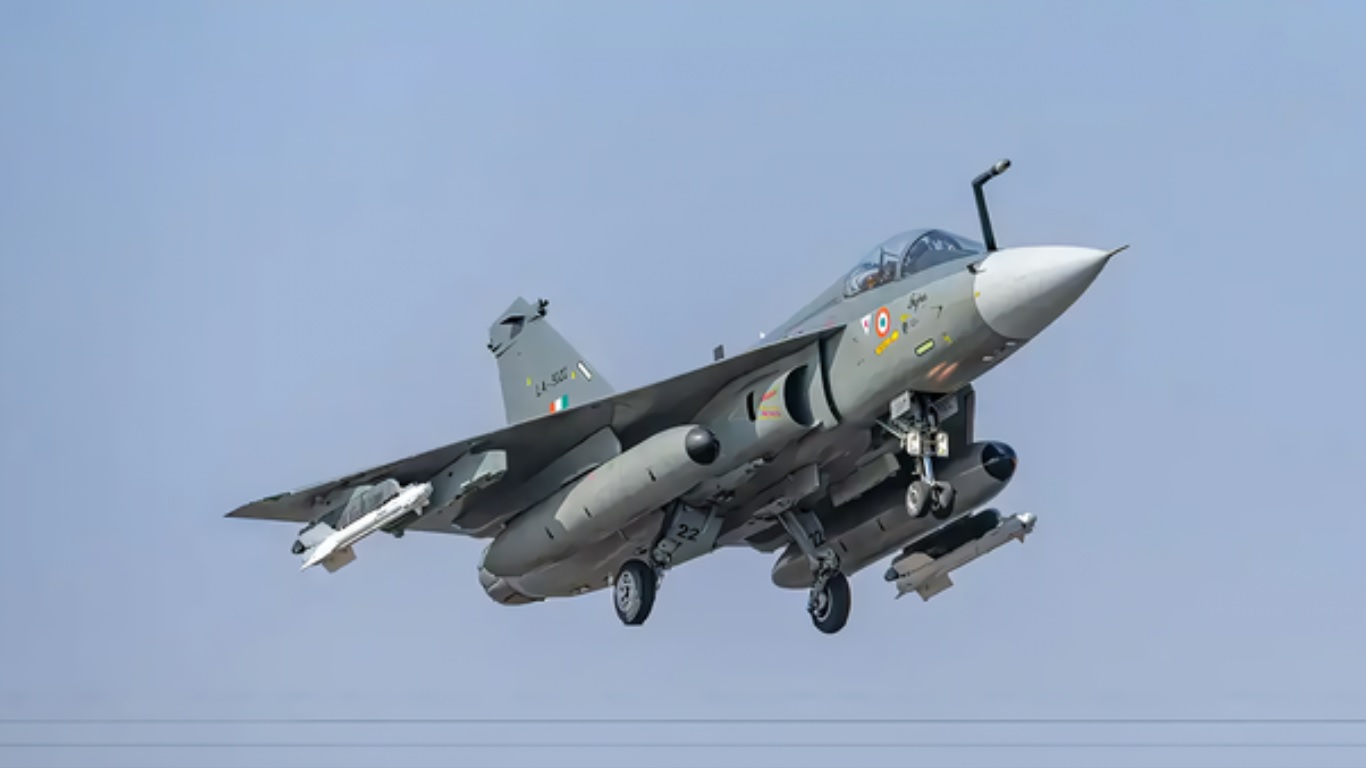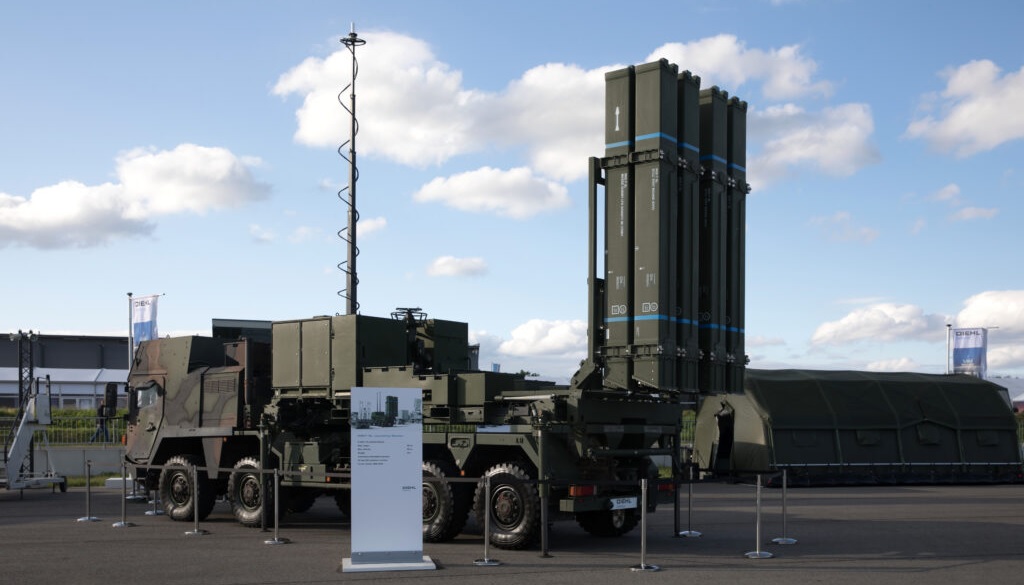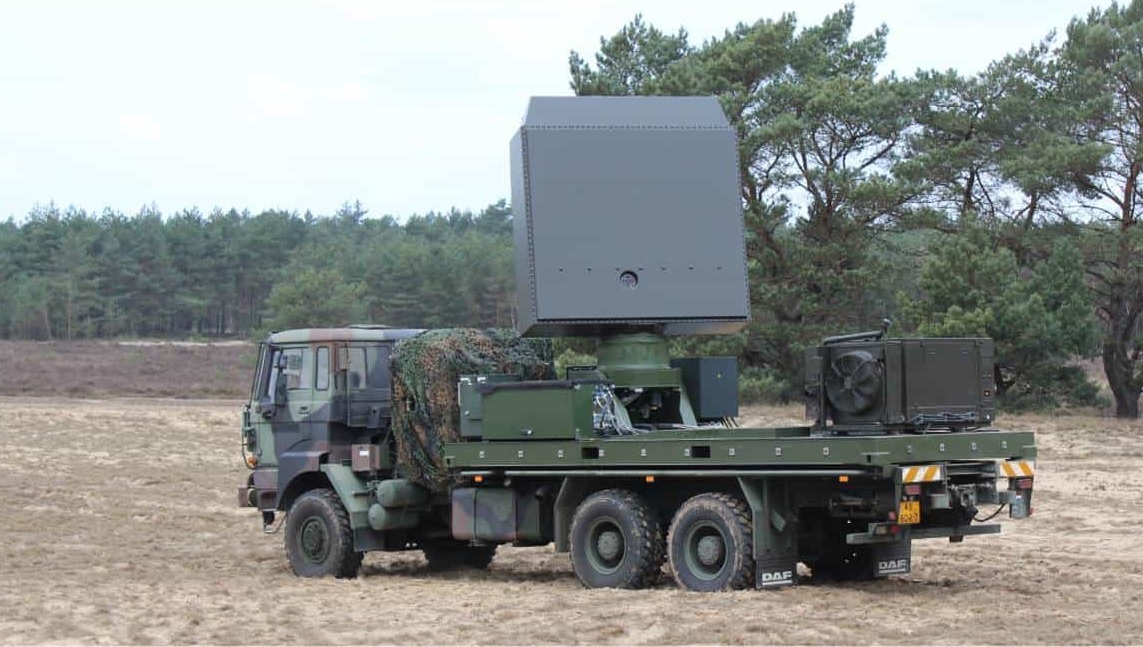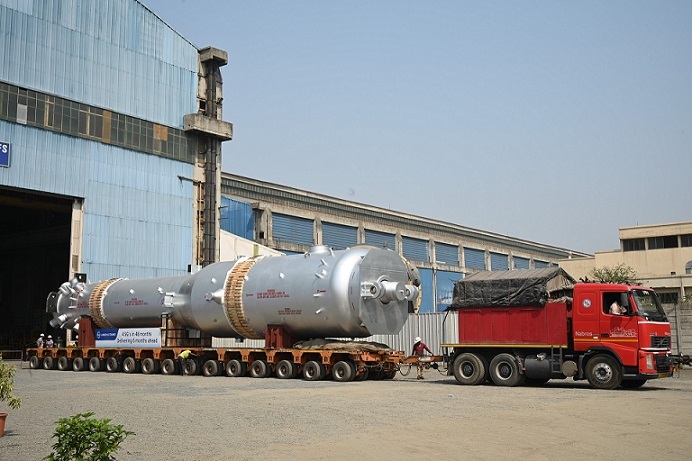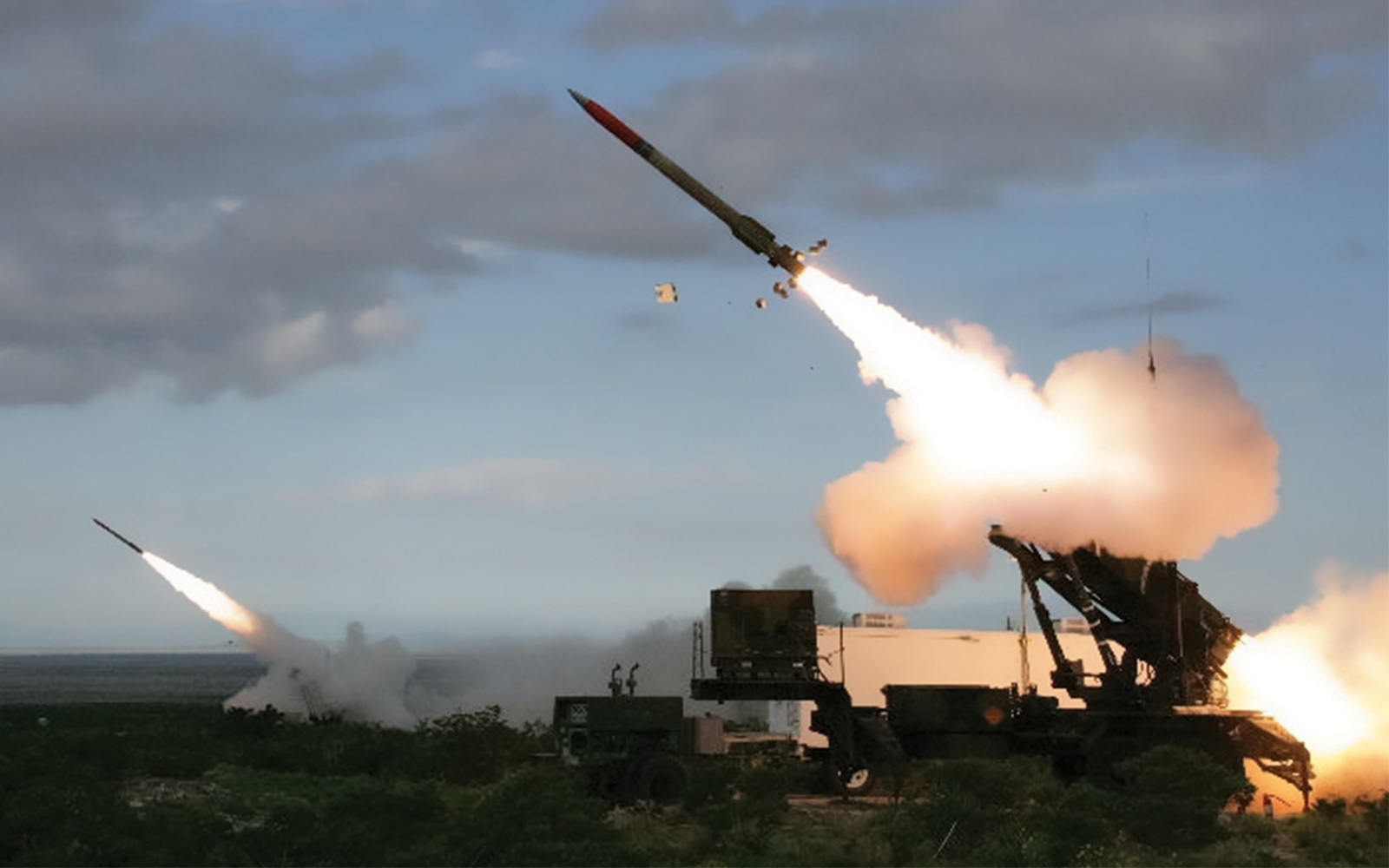World
Tensions beneath the surface of the Atlantic Ocean are escalating rapidly as British military officials uncover secret Russian surveillance equipment hidden in the waters surrounding the United Kingdom. These covert devices, believed to be monitoring the UK’s nuclear-armed Vanguard-class submarines and undersea internet cables, have triggered serious alarm within the British defence establishment. Though such activities have long been part of hidden geopolitical games, the scale and boldness of recent discoveries suggest that Russia is stepping up a dangerous form of underwater espionage—without firing a single shot. A Silent Threat to the UK's Most Vital Assets The UK's four Vanguard-class submarines, which carry the country’s nuclear deterrent, are designed to remain undetected beneath the sea. Yet, the discovery of Russian sensors tracking their movements indicates a growing risk to their secrecy—and therefore, the effectiveness of Britain’s nuclear deterrent. The fact that some of these spy devices went unnoticed for some time has caused serious concern within the Royal Navy and intelligence agencies. What makes this threat even more serious is its subtlety. This is not traditional warfare. It is what experts now describe as a "greyzone" campaign—covert, deniable, and just under the threshold of open conflict. Russia’s Greyzone Strategy at Work The greyzone approach adopted by Moscow under President Vladimir Putin blends military tactics with cyber operations, sabotage, and psychological warfare. It avoids direct confrontation, but still damages or destabilizes adversaries. One visible example is the recent sabotage of at least 11 undersea cables in the Baltic Sea over the past 15 months. British defence sources suspect Russian involvement, using old tankers from Putin’s shadow fleet as a cover to interfere with seabed infrastructure. Military insiders have explained that damaging such cables is no accident. The effort required to drag or disrupt them suggests deliberate action. And it’s not just old ships that are being used. Russian unmanned underwater vehicles (UUVs), along with yachts owned by oligarchs, are suspected of conducting secret surveillance near sensitive UK communication lines. The Bigger Picture: Cables, Cybersecurity, and Infrastructure The UK is connected to the world through a network of around 60 undersea internet cables, many of which are not publicly disclosed due to national security. Damaging or tapping these cables could cripple banking systems, internet connectivity, and military communications. That’s why Russian interest in them is so dangerous. British intelligence has collected evidence showing that some luxury yachts, operated by Russian elites, are carrying advanced scanning technology to monitor or even tamper with these critical cables—without attracting suspicion. Taking the Fight Out of the Shadows To counter this invisible threat, the UK has begun deploying more assets under a new plan called Atlantic Bastion. This initiative aims to secure British waters using a mix of drones, sensors, and naval vessels that can monitor suspicious activity both above and below the surface. A key part of this strategy is Project Cabot, which focuses on building a public-private partnership between the military and companies that manage undersea infrastructure. The goal is to share intelligence and resources to prevent sabotage before it happens. Captain Simon Pressdee, a senior officer on the Royal Navy’s new surveillance ship RFA Proteus, explained the mission clearly: “Our role is to both defeat any threats to the UK as well as take it out of the greyzone.” That means identifying those behind covert acts and holding them accountable. Old Tactics, New Considerations Inside the Royal Navy, some voices are calling for a revival of Cold War-era tactics like deploying sea mines to protect key underwater areas. Though controversial and outdated, these measures are being reconsidered as the threat evolves and becomes harder to counter with existing tools. UK and NATO's Growing Response The UK’s Ministry of Defence has acknowledged the growing risk and emphasized that it is working closely with NATO and allies in the Joint Expeditionary Force to stop Russian activity near British and NATO waters. Part of this renewed effort includes using artificial intelligence to detect suspicious patterns, coordinating more regular patrols, and investing in technologies that can track even stealthy underwater operations. Despite the increasing threat, the MoD affirmed that the UK’s nuclear submarines remain on constant, undetected patrol—just as they have done for over half a century. Final Thoughts: A Modern Undersea Battlefront Russian military and intelligence presence in the Atlantic has existed since the Cold War, but today's situation is different. The tools are more advanced, the tactics are more subtle, and the stakes are higher. This isn’t a war of ships exchanging fire, but one of hidden sensors, silent submarines, and critical infrastructure at risk. As the UK races to defend its underwater assets and update its strategy, one thing is clear: the battle for security beneath the waves has already begun—and it’s more complex and dangerous than ever before.
Read More → Posted on 2025-04-07 15:26:42World
At SOFINS 2025, Thales pulled back the curtain on the latest and nearly production-ready version of its Toutatis loitering munition, a tactical weapon that blends portability, smart guidance, and flexible deployment. Although the Toutatis has made appearances at earlier defense exhibitions, what was showcased this time represents the sixth and final stage of development, indicating it's now ready to take the next steps toward field deployment. What Is the Toutatis Loitering Munition? The Toutatis is a man-portable loitering munition — essentially a precision-guided drone with an integrated warhead that can loiter in the air and strike targets on command. Weighing just around 5 kg, the system is designed to be easily carried and deployed by a single soldier. But it can also be mounted on land vehicles, helicopters, or even naval vessels, making it incredibly versatile across various combat scenarios. Compact and Smart by Design Toutatis is launched from a tube canister using a pneumatic ejection system, thanks to its folding wings and stabilizers that make it compact for storage and deployment. Once in the air, its electric motor powers it at a cruise speed of 90 km/h, with a maximum top speed of 150 km/h in its terminal attack phase. Despite its small size, the drone packs advanced navigation capabilities. Its guidance system uses a combination of: GNSS (satellite navigation) Inertial Navigation System (INS) Magnetic compass These allow it to function even in GNSS-denied environments, such as during electronic warfare scenarios where GPS signals may be jammed. Thales’ experience in electronic warfare (EW) plays a crucial role here — with on-board algorithms able to identify and ignore jammed signals, maximizing navigational reliability. In the coming year, Thales plans to integrate its VisioNav system, a vision-based navigation method that allows the drone to fly autonomously using terrain recognition — a game-changer in contested zones where traditional signals are unreliable. Striking with Precision The terminal phase of the mission is fully visual. The operator, always in control via a tablet-based Ground Control Station, selects the target visually, and Toutatis’ onboard visual tracking system takes over. The system homes in on the selected target with deadly precision at high speed, offering mission abort capability until the last moment. The effective range of the Toutatis is up to 10 kilometers, with a flight endurance of 45 minutes on a full charge. Lethal Modularity The current Toutatis variant carries a 1 kg high-explosive fragmentation warhead, but Thales is already developing a shaped-charge variant for use against armored targets. The warhead can be loaded last-minute, offering mission-specific flexibility. The munition's nose cone flips open for easy insertion of the warhead, and the modular design suggests future versions could support different payloads as required. Deployment Options Beyond Infantry Though designed to be shoulder-launched by soldiers, Toutatis isn’t just for infantry. At SOFINS 2025, it was seen mounted on Arquus’ PLFS (Poids Lourd Forces Spéciales) Grizzly vehicle, showcasing its compatibility with heavy land platforms. Thales is also exploring helicopter-mounted launch pods and naval integration, particularly for defending ships against small, fast-moving threats like explosive-laden boats. Key Specifications of Toutatis Loitering Munition Feature Specification Weight ~5 kg Length Compact, tube-launchable Wingspan 850 mm Cruise Speed 90 km/h Top Speed 150 km/h (terminal phase) Flight Time 45 minutes Range Up to 10 km Launch System Pneumatic tube-launch Propulsion Electric motor Navigation GNSS + INS + Compass + (future) VisioNav Warhead 1 kg HE fragmentation (modular) Mission Abort Available until impact Production Timeline and Future Prospects Developed with Thales’ internal funding, the Toutatis is expected to enter low-rate initial production by early 2026. Though currently dubbed the “short-range” version, Thales has hinted at future variants with extended range and enhanced payloads, possibly expanding its role into new tactical missions and broader battle environments. Conclusion With the unveiling of the final development stage at SOFINS 2025, the Toutatis loitering munition is poised to become a critical tool in modern warfare. It combines smart technology, modularity, and soldier-friendly design — and could become a template for next-generation loitering systems in land, air, and naval operations.
Read More → Posted on 2025-04-07 15:23:34India
The Centre for Development of Advanced Computing (C-DAC), a leading R&D organization under the Ministry of Electronics and Information Technology (MeitY), has been called upon to enhance collaboration with the private sector to boost India’s innovation ecosystem. This appeal came from S. Krishnan, Secretary of MeitY, during his keynote address on the occasion of C-DAC's 38th Foundation Day. Krishnan acknowledged C-DAC’s remarkable contributions, particularly in the field of supercomputing, where it played a pioneering role by developing India’s first indigenous supercomputer, Param. He also praised its ongoing projects, including the development of indigenous servers and processors, such as those under the VEGA program — a national initiative for open-source chip design that aims to reduce dependency on foreign chip technologies. However, Krishnan emphasized that to keep pace with rapid global technological advancements, C-DAC must now expand its collaborations beyond government agencies and academic institutions to include private players. According to him, true innovation flourishes when research organizations and industries work together in synergy, combining advanced R&D with practical application, scalability, and commercial viability. He noted that the government is fully prepared to share developed technologies with private sector partners, with a view to fostering a vibrant ecosystem of innovation. These partnerships, he said, will not only enable mass production and servicing of technologies but also ensure continuous upgrades through joint efforts. Highlighting the need for a structured mechanism for technology transfer, Krishnan urged the creation of platforms that allow private firms to adopt, scale, and enhance the technologies developed by C-DAC. This will ensure that the benefits of public R&D investments reach the broader economy and support the government’s vision of “Atmanirbhar Bharat” (Self-Reliant India). Adding to this vision, ISRO Chairman V. Narayanan, who also addressed the event, shed light on how India has historically turned challenges into opportunities. He pointed out how global technology restrictions and denials in the past pushed India to develop indigenous capabilities. He cited CDAC’s early success in building a supercomputer during such a time and ISRO’s own work in developing advanced rocket propulsion systems without foreign assistance as strong examples of resilience and innovation. Together, their message was clear: for India to maintain momentum in its digital and technological progress, a collaborative approach involving government research institutions, academia, and the private sector is not just desirable—it is essential. With its strong foundation and achievements, C-DAC is in a prime position to lead this movement toward deeper integration with the industry, paving the way for the next generation of Indian technological breakthroughs.
Read More → Posted on 2025-04-07 15:14:26World
In a groundbreaking move to support Ukraine’s armed forces, UK defense firm Babcock has been awarded a proof-of-concept contract by the UK Ministry of Defence that could revolutionize how military equipment is maintained in conflict zones. The initiative centers on using 3D printing technology to recreate spare parts and critical components for military hardware—on demand and near the battlefield. Under this new arrangement, Babcock will work in partnership with British defense technology company QinetiQ. Together, they aim to provide Ukraine with the tools and technical know-how to produce essential military parts locally. This includes creating detailed digital drawings and computer-aided design (CAD) files that can be used to 3D print a wide variety of components. What makes this initiative particularly significant is its focus on reverse engineering. Many of the weapons systems and vehicles used by Ukraine originate from multiple countries and span various generations of design. Spare parts for older equipment—such as the Australian version of the M113 armored vehicle—are no longer readily available or even in production. By reverse engineering these parts, engineers can understand their structure and function and recreate them digitally, allowing for precise 3D printing whenever needed. Tom Newman, CEO of Babcock’s Land Sector, explained the motivation behind this technological push: “We aim to give Ukraine the capability to recreate the military parts that they need, where and when it really matters.” He emphasized that this project builds on Babcock’s long-standing engineering and technical strengths, pushing the boundaries of what can be achieved through 3D printing in defense. From QinetiQ’s side, the focus will be on ensuring that these printed parts meet technical standards. Alan Hart, Managing Director of Science, Technology, and Weapons at QinetiQ, noted, “We are immensely proud that QinetiQ is able to draw on our world-leading expertise in technical assurance to assist.” The impact of this program on Ukraine’s battlefield operations could be significant. With supply chains strained and traditional manufacturing slow to respond to urgent wartime needs, this new approach offers speed, flexibility, and autonomy. For a military that relies on a patchwork of foreign-supplied equipment—ranging from NATO-standard gear to aging Soviet-era systems—the ability to print parts on demand will help keep critical machinery operational. Furthermore, field-based 3D printing eliminates long delays and logistical bottlenecks. Instead of waiting weeks for a single part to be sourced and delivered, Ukrainian technicians could potentially print it within hours. This can drastically increase equipment readiness and reduce the time units spend inactive due to mechanical issues. In a broader sense, this initiative highlights the future of warfare logistics. As conflicts become more complex and reliant on multinational systems, additive manufacturing may play a vital role in keeping modern armies agile, responsive, and self-sufficient—especially in unpredictable or hostile environments. By combining reverse engineering, advanced CAD modeling, and in-theater 3D printing, the UK-led program represents a new frontier in defense innovation—one where Ukraine is the first real-world testing ground for scalable battlefield manufacturing.
Read More → Posted on 2025-04-07 15:11:34
Rheinmetall Strengthens Ammunition Supply Chain with Acquisition of Nitrocellulose Maker Hagedorn-NC
World
In a strategic move to ensure a steady supply of vital raw materials for ammunition production, German defence giant Rheinmetall AG has announced its acquisition of Hagedorn-NC GmbH—a historic producer of industrial nitrocellulose based in Osnabrück, Lower Saxony. The deal is pending antitrust approval but marks a significant step in Rheinmetall’s efforts to secure its defence production lines amidst rising global demand. Hagedorn-NC, which has been in operation for over a century, specializes in nitrocellulose—a key ingredient in the production of propellants for various types of ammunition, especially artillery shells. Until now, the company focused primarily on civilian markets. However, under Rheinmetall’s ownership, a portion of its output will be redirected towards military applications, including the manufacture of 155mm artillery ammunition, which has seen heightened demand due to ongoing geopolitical tensions. Rheinmetall CEO Armin Papperger described the acquisition as a crucial move to “overcome a strategic bottleneck in propellant production,” reinforcing the company’s vertical integration strategy. With this deal, Rheinmetall not only secures a new and reliable source of nitrocellulose but also brings more of the ammunition supply chain directly under its control—from raw material to finished product. The company already operates nitrocellulose production facilities in Switzerland (Wimmis), Spain (Murcia), and South Africa (Wellington). By adding Hagedorn-NC’s Lingen site, Rheinmetall is broadening its production footprint and reducing dependence on external or non-European suppliers. This geographic diversification enhances supply chain resilience—especially critical during times of conflict or trade disruption. Going forward, Rheinmetall plans to adapt parts of the Lingen plant to produce military-grade nitrocellulose, while still maintaining support for Hagedorn-NC’s existing civilian customer base. Around 90 employees from Hagedorn-NC will join the Rheinmetall Group, and their future employment is expected to remain secure. Gerd Hofmann, CEO of Hagedorn AG, voiced optimism about the transition, noting that the partnership with Rheinmetall will open new avenues for growth and collaboration. His confidence is rooted in the shared industrial know-how and the complementary strengths of both companies. This acquisition comes at a time when NATO countries are increasing their stockpiles of ammunition and expanding defence manufacturing capabilities. By securing a stable source of nitrocellulose—an essential yet often overlooked element in the ammunition-making process—Rheinmetall is positioning itself as a reliable and self-reliant defence supplier in Europe and beyond. In essence, the deal goes beyond just acquiring a company—it’s about controlling a critical link in the defence production chain. By bringing in Hagedorn-NC, Rheinmetall is not just making propellants—it’s fortifying its ability to meet the growing defence needs of allied nations for years to come.
Read More → Posted on 2025-04-07 15:05:34India
Air Force Station Naliya, nestled in the coastal region of Gujarat, is undergoing a significant transformation as it prepares to welcome the Indian Air Force's cutting-edge Tejas Mk1A fighter jets. This shift marks the end of an era dominated by the ageing MiG-21Bis and the beginning of a new chapter centred around indigenous technology, faster response capabilities, and enhanced air power near the sensitive Pakistan border. Located less than 100 kilometres from the strategically vital Sir Creek area, Naliya has long played a critical role in guarding India’s western frontier. For decades, it served as a forward operating base for MiG-21Bis squadrons—a Cold War-era fighter that, while once formidable, has become increasingly outdated and challenging to maintain. With the IAF set to retire the entire MiG-21 fleet by the end of 2025, Naliya is now at the forefront of India's aerial modernisation drive. The introduction of the Tejas Mk1A is not just a routine fleet update—it represents a leap in capability. Designed and manufactured in India by Hindustan Aeronautics Limited (HAL), the Tejas Mk1A comes equipped with advanced avionics, radar systems, electronic warfare capabilities, and mid-air refuelling. Its performance far exceeds that of the MiG-21, with better manoeuvrability, safety features, and multirole combat capabilities that make it ideal for both air defence and offensive roles. In preparation for this major induction, the IAF has already begun laying the groundwork. The earlier version of the Tejas, known as the Mk1 with Final Operational Clearance (FOC), was deployed to Naliya, bringing along No. 18 Squadron, the “Flying Bullets.” This initial phase allowed the base to adapt its operational ecosystem—from maintenance hangars and radar installations to pilot training and logistics. It served as a testbed to streamline the infrastructure required for the more advanced Mk1A variant. Over the last year, Naliya has seen a flurry of upgrades. Aircraft shelters have been reinforced to withstand potential blasts. Radar systems have been modernised to support long-range tracking and target acquisition. Dedicated facilities for Tejas-specific maintenance and diagnostics have been added, ensuring quicker turnaround times and operational readiness. The proximity of the base to Pakistan—just 40 to 50 kilometres from the international border—adds a layer of urgency to these upgrades. In a region where minutes can determine the outcome of an air engagement, the speed and agility of the Tejas Mk1A offers a crucial edge. It can scramble quickly, respond more effectively to aerial threats, and operate in high-tempo conflict scenarios. Beyond the immediate tactical benefits, the deployment of Tejas Mk1A at Naliya is a symbolic milestone for India's "Atmanirbhar Bharat" (self-reliant India) defence initiative. Replacing imported Soviet-era platforms with home-grown fighter jets reflects a broader strategic goal: reducing dependency on foreign arms and building a robust domestic defence industrial base. From a broader military perspective, the IAF’s decision to station its first Tejas Mk1A squadron at Naliya also signals a recalibration of India’s western defence posture. It reinforces the deterrent factor along the Pakistan front and improves India’s ability to respond swiftly to any incursion or provocation. In summary, the transformation of Naliya from a MiG-21 base to a Tejas Mk1A stronghold is more than a technological upgrade—it's a shift in philosophy. It encapsulates India’s ambitions to modernise its armed forces, rely more on indigenous innovations, and prepare its military infrastructure for the challenges of modern aerial warfare. As the IAF moves towards phasing out its legacy platforms, Naliya stands as a symbol of that forward-looking future.
Read More → Posted on 2025-04-07 15:02:36World
Estonia is preparing to make one of its largest-ever defense purchases—an estimated €1 billion ($1.1 billion) long-range air defense system—in response to the growing threat of Russian ballistic missiles stationed just across its eastern border. With its small size and geographic proximity to Russia, Estonia has always been wary of potential aggression, but the war in Ukraine has heightened its sense of urgency and pushed Tallinn to act swiftly to bolster its defenses. This major procurement is aimed at acquiring a system capable of intercepting ballistic missiles—something that current systems in the country cannot do. According to Estonia’s Center for Defense Investments (RKIK), the country is now considering three advanced options: the Israeli David’s Sling, the U.S.-made Patriot, and the Franco-Italian SAMP/T system. Each of these platforms offers high-altitude, long-range interception capabilities, including defense against ballistic missile threats. This new push comes on the heels of Estonia’s recent acquisition of the German-made IRIS-T Surface Launched Medium-range (SLM) air defense system. In 2023, Estonia signed a deal worth €400 million ($439 million) to procure three IRIS-T SLM batteries, including radars and command-and-control infrastructure. The first deliveries of that system are expected by the end of 2025. While highly effective against aircraft and cruise missiles, the IRIS-T SLM’s range of 40 kilometers (25 miles) is insufficient to protect against high-speed ballistic threats. Estonian officials have acknowledged this gap in capability. “We are going to procure long-range air defense, with capabilities against ballistic missiles,” said Mati Tikerpuu, a senior defense official at RKIK. According to him, the aim is to secure a system that can intercept incoming threats up to 100 kilometers (62 miles) away, at altitudes of 20 kilometers (12 miles). The threat Estonia faces is not hypothetical. Russia’s 9K720 Iskander-M, a short-range ballistic missile with a range of 500 kilometers and speeds of up to 8,000 kilometers per hour, is already deployed in areas like Kaliningrad and western Russia—well within range of Estonia’s cities and critical infrastructure. Interestingly, Estonia has ruled out the Israeli Arrow 3 missile system, which is designed for exoatmospheric interception (outside the Earth’s atmosphere). Tikerpuu explained that because Russia is so close, its missiles would be launched from relatively short distances, making a high-altitude, long-range interception system like Arrow 3 less practical for Estonia’s needs. The three options under consideration each have unique strengths. The David’s Sling is designed to intercept medium- to long-range rockets and missiles and is already part of Israel’s multi-layered missile defense. The Patriot system, widely used across NATO, is battle-tested and offers flexibility with various missile types. The SAMP/T, meanwhile, is Europe’s answer to integrated air and missile defense, developed by France and Italy with a strong focus on interoperability and mobility. While talks are ongoing and no final contract has been signed, Estonia has already initiated early conversations with the manufacturers. The next steps will involve detailed negotiations over system specifications, delivery timelines, pricing, and quantities. Given the scale and complexity of the procurement, the final deal could run into the billions of euros. This planned investment underscores Estonia’s broader strategic shift: moving from basic deterrence to building a credible and layered air defense shield. In the current European security environment, smaller NATO nations like Estonia are realizing that survival may depend on the ability to stop incoming missiles within seconds—and decisions made now could define the country’s security posture for decades.
Read More → Posted on 2025-04-07 14:59:29World
In a major move to enhance its national security and airspace protection, the Swedish Defence Materiel Administration (FMV) has signed a contract with French defence company Thales for the procurement of the Ground Master 200 Multi-Mission Compact radar (GM200 MM/C). This strategic acquisition comes at a time of rising security challenges in the Nordic and Baltic regions. The GM200 MM/C radar is a next-generation, medium-range multi-mission radar system, built to significantly improve the Swedish Armed Forces' situational awareness and response capability. It uses cutting-edge 4D AESA (Active Electronically Scanned Array) technology, which allows for simultaneous detection, tracking, and classification of various types of aerial threats — including aircraft, helicopters, unmanned aerial vehicles (UAVs), and incoming missiles. Key Features and Specifications of GM200 MM/C: Technology: 4D AESA radar offering superior tracking precision Range: Medium-range surveillance, typically around 250 kilometers Target Tracking: Can track hundreds of targets simultaneously Mobility: Highly compact and mobile — can be rapidly deployed in various terrains Operation: Designed for quick set-up and relocation, ideal for both stationary and mobile missions Modes: Multi-mission — air surveillance, ground-based air defence (GBAD), and counter-UAV roles Coverage: 360-degree surveillance with high update rate Climate Resistance: Built to function reliably in harsh weather conditions The deliveries are expected to begin in 2026, marking Thales’s ability to meet tight operational timelines. The fast-paced schedule has been made possible due to the company’s strong industrial ramp-up programme that ensures efficient production and timely delivery. This radar system is not only a technical upgrade but also reflects Sweden’s increasing alignment with NATO defence standards. With this deal, Sweden becomes the fifth NATO nation to adopt the GM200 MM/C, reaffirming the system’s effectiveness and trustworthiness among allied forces. Its compact design and operational flexibility make it especially suitable for Sweden's defence strategy, which emphasizes rapid deployment, adaptability, and interoperability within NATO frameworks. The radar’s multi-role capabilities ensure it can support a range of operations, from routine surveillance to crisis scenarios. Thales expressed its pride in being chosen for this important role in Sweden’s defence architecture. Håkan Ahlström, Country Director Sweden at Thales, stated, “We are very proud to be selected by FMV to further strengthen Swedish sovereign and defence capabilities in an increasingly challenging environment. The Thales GM200 MM/C, with its high-end technology, will play a vital role contributing to the overall national security.” As regional tensions and aerial threats continue to evolve, Sweden’s investment in the GM200 MM/C represents a strong step forward in protecting its skies, securing its sovereignty, and enhancing its role within the broader NATO defence network.
Read More → Posted on 2025-04-07 14:55:39India
India’s defence sector is poised for a major leap in self-reliance as Hindustan Aeronautics Limited (HAL) prepares to roll out 156 indigenously developed Light Combat Helicopters (LCH) for the Indian Army and Air Force. This landmark ₹62,500 crore deal, recently cleared by the Cabinet Committee on Security and signed on the same day, is not only significant for the armed forces but also a game changer for private industry involvement in defence production. In a major policy shift, HAL is planning to outsource a massive 40% of the project—worth nearly ₹25,000 crore—to Indian private companies. This is similar to the approach taken in the Light Combat Aircraft (LCA) Tejas programme, where HAL partnered with companies like Larsen & Toubro and Vem Technologies to build key aircraft components such as the fuselage and wings. For the LCH programme, HAL is expected to issue tenders soon, inviting the private sector to take part in manufacturing key components and systems of the helicopters. This move is not just about speeding up production, but also about strengthening the defence ecosystem by giving domestic companies a larger role in national security projects. The helicopters will be assembled at HAL’s facilities in Bengaluru and Tumkur, both in Karnataka. These modern plants are equipped with advanced infrastructure and are part of HAL’s long-term expansion plans aimed at handling high-volume, indigenous defence orders. The Light Combat Helicopter, designed and developed by HAL, is a state-of-the-art multi-role platform capable of performing in high-altitude warfare, anti-armour operations, and counter-insurgency missions. It is already proven in operations and has shown excellent performance in tough terrain, including deployments in the Ladakh region. Defence Minister Rajnath Singh recently witnessed the delivery of the first rear fuselage for the LCA Mk1A, manufactured by a private firm—Alpha Tocol Engineering Services. This milestone reflects the growing trust and capability of India’s private industry to deliver world-class aerospace components. HAL, the backbone of India’s aerospace and defence manufacturing, is now actively pursuing deeper collaboration with private companies to promote self-reliance under the 'Atmanirbhar Bharat' vision. With an order book exceeding ₹2 lakh crore and future orders worth ₹70,000 crore in the pipeline, HAL’s expansion is expected to create thousands of jobs, fuel innovation, and reduce the country’s reliance on foreign defence imports. Currently, HAL is also working on other significant contracts, including 12 Su-30MKI fighter jets and 83 LCA Mk1A aircraft—10 of which are trainer versions. This surge in indigenous defence production, combined with private sector integration, marks a turning point in India’s journey to becoming a global defence manufacturing hub. The LCH deal is not just about helicopters—it’s about building a stronger, self-reliant, and technology-driven defence ecosystem that supports national security and economic growth simultaneously.
Read More → Posted on 2025-04-07 14:53:50World
In a fresh blow to diplomatic hopes, Iran has firmly turned down former U.S. President Donald Trump’s call for direct nuclear talks, arguing that dialogue under threat is both pointless and contradictory. The refusal comes amid rising tensions between Tehran and Washington, with Iran accusing the United States of using coercive language and failing to show genuine commitment to peaceful diplomacy. Last month, Trump sent a letter to Iran’s Supreme Leader Ayatollah Ali Khamenei through the United Arab Emirates, suggesting direct negotiations to resolve longstanding concerns over Iran’s nuclear program. The letter included a stern warning that if diplomacy failed, military options were still on the table. Despite this, Trump recently doubled down on his stance, stating that face-to-face talks would be “faster” and more effective than negotiations through intermediaries. But Tehran isn’t buying it. Iran’s top diplomat Abbas Araghchi dismissed the proposal outright, calling direct talks meaningless with a country that issues threats and contradicts itself. “We are dealing with a government that constantly violates international norms by threatening the use of force,” Araghchi said. He added that Iran remains open to indirect negotiations but emphasized the need for mutual respect and seriousness in diplomacy. President Masoud Pezeshkian echoed this sentiment, questioning the logic of negotiating with a nation that simultaneously speaks of peace while brandishing threats. “If you truly want dialogue, then why the constant pressure and threats?” he asked, reiterating Iran’s willingness to engage on equal footing but only in an environment free of coercion. Iran's leaders made it clear they are not rejecting diplomacy altogether—they're rejecting the form and tone in which it's being offered. Iran’s Strategic Calculations Iran’s response, delivered through Oman, stressed its preference for peace and regional stability. General Mohammad Bagheri, Chief of Staff of Iran’s armed forces, underlined that while Iran does not seek war, it stands fully prepared to defend itself if provoked. This diplomatic standoff comes against the backdrop of the long-dormant 2015 nuclear agreement, formally known as the Joint Comprehensive Plan of Action (JCPOA). The deal, signed between Iran and six world powers, limited Iran’s nuclear activities in exchange for the lifting of economic sanctions. However, in 2018, Trump unilaterally withdrew from the pact and reinstated harsh sanctions, pushing Iran to gradually abandon its commitments and ramp up its nuclear program. While Western powers continue to accuse Tehran of trying to build nuclear weapons, Iran insists its program is strictly for civilian purposes. Still, the pressure is mounting. In a stark warning, Ali Larijani, a senior adviser to Ayatollah Khamenei, cautioned that while Iran does not desire nuclear weapons, it might be forced to pursue them if the country faces an existential threat. Why Iran Is Saying “No” to Direct Talks At the heart of Iran’s rejection is a deep-seated mistrust rooted in decades of hostility, regime change efforts, sanctions, and broken agreements. Iranian officials see direct talks, especially with Trump—who dismantled the JCPOA—as unreliable and laden with bad faith. For them, returning to the table without guarantees or mutual respect is a trap, not a solution. In their view, negotiating under threat is not diplomacy—it’s blackmail. That’s why, despite being open to indirect dialogue through trusted intermediaries like Oman, Iran is standing firm on refusing direct engagement for now. Final Thoughts Iran’s rebuff to Trump’s direct diplomacy reflects not just a rejection of one man’s offer, but a broader skepticism about American intentions. As both sides dig in, the window for a peaceful, negotiated solution remains open—but only barely. Without a shift in tone, trust, and tactics, the road to resolving the nuclear issue may remain blocked by a wall of suspicion and strategic calculation.
Read More → Posted on 2025-04-06 14:53:14World
Latvia is taking a major step to modernize its military by purchasing 42 ASCOD infantry fighting vehicles (IFVs) from Spain’s defense company, GDELS-Santa Bárbara Sistemas. The deal, valued at €373 million (around $408 million), is part of a broader plan to strengthen the Latvian National Armed Forces, especially its mechanized infantry brigade. This purchase is more than just a replacement for outdated vehicles—it marks a significant upgrade in Latvia’s combat readiness. The new ASCOD IFVs will take the place of the older CVR(T) reconnaissance vehicles previously bought from the United Kingdom. Compared to those older models, the ASCOD offers far better protection, mobility, and firepower. Each ASCOD comes with NATO-standard Level 4 armor, a powerful 30mm automatic cannon, anti-tank weapon systems, and advanced communication and sensor systems. It’s operated by a crew of three and can carry six fully armed soldiers into battle. The new vehicles will serve one battalion of Latvia’s mechanized infantry brigade, but the Ministry of Defense has made it clear that this is just the beginning. If more funding becomes available, more battalions could be equipped with similar vehicles. The contract also leaves room for the future possibility of domestic production or assembly of ASCOD vehicles in Latvia—something that would boost local manufacturing and defense capabilities. An important part of the deal is that 30% of its total value is reserved for the Latvian industry. This means local companies could benefit through technology transfer, producing parts, or offering maintenance and support services. It’s not just about buying vehicles—it’s also about building Latvia’s long-term defense potential from within. The choice of the ASCOD platform also reflects a move toward greater compatibility across military units. Using the same type of vehicle in different battalions makes logistics, maintenance, and training easier and more cost-effective over time. In terms of battlefield value, the ASCOD is a strong asset. Its high-level armor ensures better protection for troops, while its weapons and advanced systems make it suitable for both offensive and defensive operations. With today’s complex threats—from hybrid warfare to direct armed conflict—Latvia’s army needs tools that can adapt and perform in multiple scenarios. The ASCOD does exactly that. This move also aligns with broader NATO goals, as Latvia continues to invest in meeting alliance standards and increasing its contribution to regional security, especially given current tensions in Eastern Europe. In summary, this deal is more than a vehicle purchase—it’s a smart, strategic investment in Latvia’s future defense capabilities. It boosts the military’s firepower, supports local industry, and prepares the nation to better face modern security challenges.
Read More → Posted on 2025-04-06 14:51:05India
In a significant stride toward India’s goal of defence self-reliance, Godrej Aerospace has successfully delivered two modules of the Kaveri Derivative Engine, also known as the Dry Kaveri, to the Gas Turbine Research Establishment (GTRE). This delivery marks a pivotal moment in India’s indigenous jet engine development journey and underlines the growing role of private industry in the nation’s aerospace sector. The Dry Kaveri engine is a modified, non-afterburning version of the original Kaveri engine that was originally developed for the Light Combat Aircraft (LCA) Tejas. While the original Kaveri program faced multiple delays and challenges, the Dry Kaveri variant has found renewed purpose in powering future unmanned aerial vehicles and potential light combat aircraft. With a thrust class of around 48 kN, the Dry Kaveri is tailored for platforms that do not require afterburning capability, making it ideal for UAVs and stealth applications. Godrej Aerospace’s achievement stems from a September 2022 contract awarded by DRDO, which tasked the company with manufacturing eight engine modules. The first two modules have now been completed and handed over to GTRE within the stipulated two-year timeframe. This success reflects Godrej's growing expertise in aero-engine manufacturing, a field traditionally dominated by government entities. As per the contract, six more modules are under development and expected to be delivered by late 2025. These modules will complete the set required to assemble a full Dry Kaveri engine for further performance testing and evaluation. Once the full engine is ready, it will undergo a rigorous series of ground and flight tests, which are crucial to validate its design, durability, and performance under real-world conditions. The Dry Kaveri engine has already undergone high-altitude testing in Russia, where its initial results were marked as satisfactory. However, continued testing and iterations will be necessary before it can enter operational deployment. Importantly, GTRE is also working on an afterburner module for the Dry Kaveri, which is expected to enhance its thrust to 73-75 kN. If successful, this could open the door for its use in manned platforms such as HAL’s HLFT-42, a new-generation trainer and light combat aircraft being designed for both domestic and export markets. The broader impact of this project goes beyond just the engine itself. According to executives from Godrej Aerospace, the project has enabled the company to develop crucial metallurgical and manufacturing expertise, particularly in handling challenging materials like titanium. Titanium is essential in aerospace applications due to its strength, lightweight, and corrosion resistance but requires precision engineering due to its difficult nature. Developing the ability to work with such materials is a strategic gain for India’s entire aerospace manufacturing ecosystem. This initiative also aligns with India’s long-term vision to develop its own 5th generation fighter jet engines, particularly for the Advanced Medium Combat Aircraft (AMCA) project. While that goal is still on the horizon, the Dry Kaveri project serves as a vital stepping stone, helping Indian engineers and private firms gain the knowledge and experience needed to build more complex engines in the future. In conclusion, Godrej Aerospace’s delivery of the first two Dry Kaveri engine modules is not just a contract milestone—it’s a symbol of India’s evolving aerospace capabilities. As more modules are completed and tested, the project will bring India closer to a future where indigenous engines power its next generation of combat aircraft and unmanned systems. This also represents a shift in India’s defence ecosystem, where public-private partnerships are becoming the cornerstone of innovation and self-reliance.
Read More → Posted on 2025-04-06 14:43:10India
India is preparing for a major leap in its airborne surveillance capabilities as the Indian Air Force (IAF) is set to induct six new Netra Mk1A Airborne Early Warning and Control (AEW&C) aircraft. These systems will be based on pre-owned Embraer EMB-145 regional jets and will significantly enhance the IAF’s real-time battlefield awareness, airspace monitoring, and threat detection capabilities. This expansion, once formally cleared by the Defence Acquisition Council (DAC), will nearly triple the IAF’s current AEW&C capacity, a critical improvement that military planners have long advocated—especially after lessons drawn from aerial skirmishes in 2019 with neighboring Pakistan. Building on a Proven Platform The current Netra AEW&C systems, built by DRDO’s Centre for Airborne Systems (CABS), use the same EMB-145 platform and have been in service since the 2010s. They offer 240-degree radar coverage over a range of roughly 450 kilometers and are integrated with Indian-made AESA radar, Identification Friend or Foe (IFF) systems, secure data links, and electronic countermeasure technologies. The upcoming Mk1A version will build upon this proven design but bring notable improvements in radar range, signal intelligence gathering, threat tracking, and electronic warfare support. These enhancements are designed to address India’s growing airspace security challenges across its western and northern frontiers. Strategic Partnership: Adani and Embraer Since the EMB-145 is no longer in production, the plan involves acquiring pre-owned jets from the global market. Brazil’s Embraer, the original manufacturer, will partner with India’s Adani Defence and Aerospace to source suitable airframes. This is a pragmatic approach, leveraging Embraer’s global reach and Adani’s expanding defence industry presence in India. Adani won’t just help locate the jets—it will also play a central role in converting the commercial EMB-145s into sophisticated military AEW&C platforms. This includes structural modification, installation of radar domes, integrating indigenous mission systems, and carrying out extensive avionics upgrades. Adani’s growing Maintenance, Repair and Overhaul (MRO) capabilities will also help keep the aircraft service-ready throughout their operational life. This partnership fits neatly into India’s push for defence self-reliance, as it ensures that high-end systems like Netra are not only designed but also assembled and upgraded within the country. Why the EMB-145 Still Matters Despite being out of production, the Embraer EMB-145 remains a reliable and efficient platform. With a range of over 2,800 km and a cruise speed of Mach 0.78, it is well-suited for extended surveillance missions. Its previous successful integration with Indian systems means less development risk and faster deployment timelines for the Mk1A variant. Careful selection of used airframes will be key. These jets must be structurally sound and capable of handling the additional electronic and structural weight imposed by the AEW&C systems. Once selected, they will undergo significant modification, likely with technical assistance from Embraer engineers, to meet the military standards of the IAF. Strategic Impact and Forward Path The addition of these six Netra Mk1A aircraft is only one part of a larger strategy to strengthen India’s airborne surveillance network. In parallel, India is also developing six larger AEW&C systems based on the Airbus A321 platform. These will offer longer endurance and larger radar coverage but will take more time to enter service due to their complexity and scale. In contrast, the EMB-145 based Netra Mk1A aircraft are expected to be operational sooner, thanks to the maturity of the technology and existing expertise. The IAF’s current use of the EMB-145 for VIP transport also adds logistical familiarity to the equation, further smoothing integration. With this project, India is not just adding numbers to its fleet—it’s making a qualitative upgrade to its ability to maintain situational awareness in contested skies, coordinate air operations, and respond to threats in real time. In an era of rising regional tensions and the increasing use of drones, cruise missiles, and low-flying aircraft, having more “eyes in the sky” is no longer optional—it’s essential. The Netra Mk1A initiative, combining indigenous tech, private sector capability, and international collaboration, marks a promising step in India’s defence modernisation journey.
Read More → Posted on 2025-04-06 14:38:00India
India has reached a major milestone in its pursuit of clean and sustainable energy by completing the concept design of the Bharat Small Modular Reactor (BSMR-200) — a 200 MWe pressurised water reactor. This landmark project, developed jointly by the Bhabha Atomic Research Centre (BARC) and the Nuclear Power Corporation of India Limited (NPCIL), is tailored to meet the evolving needs of India’s power sector, especially in areas where traditional large nuclear reactors may not be feasible. What Makes the BSMR-200 Special? Unlike conventional nuclear plants, the BSMR-200 is a compact, scalable, and safer alternative. It’s equipped with advanced passive safety systems, meaning it can shut down and cool itself during emergencies without the need for operator intervention or external power. This drastically reduces the risk of accidents, even under off-normal conditions. The reactor will run on slightly enriched uranium, maintaining India’s tradition of using indigenous fuel sources, while also enhancing energy efficiency. Once financial approval is secured, the first demonstration unit is expected to be constructed within six years, and commissioned by the seventh year, with a projected cost of around ₹5,700 crore. Strategic Vision and Industrial Applications The government envisions these small modular reactors as a key component of its plan to achieve 100 GW of nuclear power capacity by 2047, in line with India’s clean energy transition goals. The BSMRs are designed for multiple real-world applications, including: Captive power supply to energy-intensive industries like steel, cement, and aluminium. Electricity generation for remote and off-grid regions, improving access and reliability. Repurposing aging thermal power plants, allowing their existing infrastructure to support modern nuclear energy systems. This approach not only aids in decarbonising India’s energy mix, but also revitalises old industrial assets, making the transition to clean energy more cost-effective. Involving the Private Sector: A Historic Shift One of the most revolutionary aspects of the BSMR initiative is the opening up of India’s nuclear sector to private companies. For decades, nuclear energy generation in India was the exclusive domain of the government, strictly regulated by the Atomic Energy Act of 1962. Now, through structured collaboration, the Department of Atomic Energy (DAE) plans to work with private vendors for key components like reactor pressure vessels and coolant pumps. Construction and commissioning will be carried out by pre-qualified Engineering, Procurement and Construction (EPC) firms, selected through competitive bidding. This strategy not only attracts fresh investment, but also accelerates deployment by tapping into the technical expertise and efficiency of India’s private sector. Technological Roots in Proven Systems The Bharat Small Modular Reactors draw their core design principles from India’s successful 220 MWe Pressurised Heavy Water Reactor (PHWR) technology. Sixteen of these reactors are already operational in the country, making them a reliable base for further innovation. The BSMR, however, adapts this experience into a pressurised water reactor (PWR) design — more suited for modular, factory-based manufacturing and faster construction cycles. A Game-Changer for the Future With the global focus shifting towards decentralised, clean, and secure energy systems, India’s BSMR programme places it at the forefront of next-generation nuclear technology. It not only reflects the country's commitment to sustainability, but also showcases its capability to lead in innovative nuclear solutions that are safer, smaller, and smarter. As the world grapples with the twin challenges of climate change and energy security, the Bharat Small Modular Reactor stands out as a timely and strategic answer, combining indigenous expertise, industrial collaboration, and forward-thinking policy reforms.
Read More → Posted on 2025-04-06 14:31:56World
Kraken Technology Group has officially launched full-scale operations at its state-of-the-art AREA 1 manufacturing facility, marking a major milestone in the development and deployment of uncrewed maritime technologies. With a current output exceeding 500 advanced uncrewed surface and subsurface systems annually, the company has positioned itself as a leading force in the growing market for autonomous naval platforms. Kraken confirmed that the facility is fully operational, with further expansion planned in 2025, including additional production lines to meet growing demand. Described by the company as "no smoke, no mirrors," AREA 1 is engineered to deliver scalable, high-performance, and cost-effective uncrewed systems for global use. Flagship Systems: K3SCOUT and K4 MANTA Kraken’s production line currently focuses on two advanced uncrewed platforms — the K3SCOUT and the K4 MANTA — each designed with distinct mission profiles in mind: K3SCOUT: Agile and Discreet The K3SCOUT is a compact, low-signature autonomous surface vessel optimized for stealth and agility. It is ideal for missions such as: Maritime surveillance Coastal perimeter defence Lightweight logistics and supply transfer The vessel’s design emphasizes minimal detectability, making it highly effective in contested or sensitive coastal environments. With its quiet propulsion system and modular payload capacity, the K3SCOUT can be quickly adapted for various operational needs, including humanitarian support or tactical reconnaissance. Key Specifications of K3SCOUT: Compact hull for rapid deployment Low-acoustic signature propulsion Range optimized for near-shore operations Remote command and autonomous operation modes K4 MANTA: A Hybrid Naval Game-Changer The K4 MANTA stands out as a revolutionary hybrid platform, capable of both high-speed surface travel and limited subsurface operation. Dubbed a “foiling uncrewed surface-subsurface vehicle,” the K4 MANTA is built for: ISR (Intelligence, Surveillance, and Reconnaissance) Precision strike capabilities Covert special operations Its hydrofoil design enables enhanced stability and speed over water, while its submerged functionality increases stealth during critical mission phases. The K4 MANTA is especially suited for modern naval challenges where flexibility and reduced visibility are key. Key Specifications of K4 MANTA: Dual-mode operation: surface and subsurface Hydrofoil technology for enhanced speed and range Modular mission bay for payload versatility Covert navigation systems with low detectability Scaling to Meet Global Demand The launch of AREA 1 aligns with rising global interest in autonomous maritime platforms for both commercial and defense sectors. While Kraken has not publicly disclosed its client list, the company confirmed that active contracts are already in progress, spanning both governmental and non-governmental applications. With its sharp focus on innovation, modularity, and mission readiness, Kraken Technology Group is rapidly establishing itself as a leader in the uncrewed maritime domain. The expansion of the AREA 1 facility is expected to support this growth well into the future, as demand for smarter, faster, and more versatile naval systems continues to rise. Kraken’s bold vision and technological edge are now backed by full-scale production capabilities — making advanced maritime autonomy not just a concept, but a reality today.
Read More → Posted on 2025-04-06 14:28:09World
In a bold and forward-looking move, Indian engineering giant Larsen & Toubro (L&T) has proposed the development of a fully indigenous 110 kilonewton (kN) thrust jet engine to power the next generation of Indian fighter aircraft — the Tejas Mk2 and the Advanced Medium Combat Aircraft (AMCA). The proposal, if greenlit, could mark a watershed moment for India's defence manufacturing capabilities. Jayant Damodar Patil, who leads L&T’s aerospace and defence operations, outlined the company’s vision to drive this high-tech engine program in collaboration with other leading private sector firms. The thrust class being targeted — 110kN — is necessary for powering medium-weight and stealth fighters, making it a critical need for India’s future air combat roadmap. Crucially, Patil has made a strong pitch for a shift in how such defence programs are awarded. He urged the government to move beyond the long-followed "L1 syndrome," where contracts are given to the lowest bidder, regardless of capability. Instead, he advocates for a merit-based approach that rewards technical excellence, innovation, and proven capability. This, he believes, will be vital to attract serious industry players and ensure the success of the complex engine development mission. Learning from the Kaveri Experience The Kaveri engine, developed by the DRDO’s Gas Turbine Research Establishment (GTRE), was India's first attempt to build a fighter jet engine. Despite decades of effort and a budget of over ₹2,000 crore, the engine failed to meet the required thrust levels for Tejas Mk1, which ultimately led India to adopt General Electric’s F404 engines for operational use. However, as Patil pointed out, the Kaveri project wasn’t a total loss. It laid important groundwork in key technologies like metallurgy, turbine blade design, and compressor systems. These learnings, he said, will serve as a springboard for the proposed 110kN engine — only this time with a broader ecosystem of public-private collaboration. A National Mission in the Making The proposed engine would not only meet the needs of the Tejas Mk2 but is also expected to be the heart of the AMCA — India’s indigenous stealth fighter under development. These platforms are key to the Indian Air Force's future force structure and strategic deterrence capability. Unlike the Kaveri, which was developed largely by GTRE in isolation, L&T is suggesting a consortium model. This could bring together the best of Indian industry — including firms like Tata Advanced Systems, Mahindra Aerospace, and Godrej Aerospace — to pool talent, infrastructure, and financial muscle. Such a collaborative model also aligns with global best practices, where complex aerospace programs often rely on multi-agency participation rather than placing the entire burden on a single organisation. Financial and Technological Hurdles Creating a 110kN jet engine is an enormously complex and resource-intensive project. Industry estimates suggest it may require investments in the range of ₹15,000 to ₹20,000 crore, and a timeline stretching 10 to 15 years. That would put an engine prototype in place around 2035 — just in time for AMCA’s production phase. One of the major technical challenges is mastering the ‘hot section’ of the engine — the part that operates under extreme temperatures and pressures. This involves sophisticated materials like single-crystal turbine blades and advanced cooling techniques. Though India has gained some expertise through the development of a dry (non-afterburning) Kaveri variant — now earmarked for unmanned combat drones like Ghatak — more advanced know-how is still needed. There may also be a requirement for strategic foreign partnerships for critical subsystems, echoing earlier talks with France’s Safran for potential collaboration on the Kaveri program. Strategic and Policy Alignment The timing of L&T’s proposal is significant. India’s 'Atmanirbhar Bharat' (Self-Reliant India) policy places strong emphasis on developing indigenous defence capabilities. A successful engine program would not only reduce dependence on foreign suppliers but also provide India with strategic autonomy in aerospace propulsion — a technology currently mastered by only a handful of nations. The DRDO is also pursuing next-generation engine development, suggesting alignment at the national level. Whether L&T’s specific proposal receives formal backing remains to be seen, but it certainly fits within the broader policy thrust. Final Word L&T’s proposal represents not just an engineering challenge, but a test of India’s defence industrial vision. If the government embraces a merit-based approach, supports public-private collaboration, and ensures sustained funding, India could finally cross the threshold into jet engine self-reliance — a goal that has remained elusive for decades. A homegrown 110kN engine could power more than just aircraft. It could power a new era of technological independence, industrial growth, and strategic confidence for India’s defence sector.
Read More → Posted on 2025-04-06 14:24:56World
Larsen & Toubro (L&T) Heavy Engineering has achieved a key milestone by dispatching the fourth and final Steam Generator (SG) for the Kaiga Atomic Power Station in Karnataka. This successful delivery marks the completion of a critical component set for one of India’s upcoming 700 MWe Pressurised Heavy Water Reactors (PHWR), a part of the country’s ambitious 10x700 MWe nuclear expansion programme. What makes this achievement stand out is not just the completion of the fourth SG, but the fact that it was delivered a remarkable nine months ahead of schedule. L&T managed to manufacture and dispatch the entire set of four steam generators within just 45 months, with the first one ready in a record time of 33 months — setting new global standards in nuclear equipment production and timely delivery. Steam generators play a vital role in nuclear power plants. Acting as large-scale heat exchangers, they transfer heat from the reactor’s core to convert water into steam, which then drives turbines to generate electricity. The quality and reliability of these components are essential for the safety and efficiency of nuclear operations. L&T has long been a trusted name in this domain. With more than 42 steam generators built for India’s nuclear plants so far, the company’s manufacturing expertise is well-established. These SGs are fabricated using advanced technologies within dust-free enclosures at L&T’s A.M. Naik Heavy Engineering Complex in Hazira, Gujarat. The facility’s cutting-edge infrastructure allows it to meet the stringent quality standards required for nuclear-grade equipment. The dispatch ceremony of the final SG was attended by senior officials from the Nuclear Power Corporation of India Ltd. (NPCIL), underlining the strategic partnership between L&T and India’s premier nuclear power body. Anil V Parab, Whole-time Director and Senior Executive Vice President at L&T Heavy Engineering, described this accomplishment as a reflection of the company’s strong nuclear quality culture and its contribution toward national development goals. This milestone comes at a time when India is intensifying its focus on clean and sustainable energy. The Kaiga plant already houses four 220 MWe PHWRs and is currently expanding with two more 700 MWe units. These additions are part of India’s broader aim to triple its nuclear power capacity to 22.48 GWe by 2032 and ultimately reach 100 GWe by 2047 under the “Viksit Bharat 2047” vision — a roadmap to position India as a developed, energy-secure nation. L&T’s contribution also aligns with the Aatmanirbhar Bharat (self-reliant India) initiative, as it showcases indigenous capabilities in manufacturing highly specialized and critical nuclear components. In a world increasingly leaning toward clean energy, such domestic capabilities not only strengthen India’s energy security but also reduce dependence on foreign suppliers for strategic infrastructure. Looking ahead, L&T’s proven record and forward-looking investments in nuclear technology will continue to support India’s transition toward a greener future, with nuclear energy expected to play a central role in meeting both rising energy demand and the nation’s climate goals.
Read More → Posted on 2025-04-06 14:22:04World
In a significant move reflecting shifting global security priorities, the United States has temporarily redeployed its advanced Patriot missile defense systems from South Korea to the Middle East. This marks the first known instance where U.S. Forces Korea (USFK) assets are being relocated to support operations in a different region, highlighting growing American concerns over potential Iranian retaliation. The systems involved include the highly capable Patriot Advanced Capability-3 (PAC-3) interceptors—an essential component of the layered defense shield designed to protect South Korea from North Korean missile threats. Despite this redeployment, U.S. officials have stressed that the overall readiness and deterrence posture on the Korean Peninsula remains fully intact. According to U.S. Forces Korea, the movement of personnel and equipment is part of a rotational deployment, not a permanent withdrawal. This assurance aims to calm anxieties both in Seoul and among regional observers who closely watch the balance of power on the peninsula. "USFK will still maintain a ready, capable, and lethal force on the Korean Peninsula prepared to respond to any contingency," the command emphasized in a statement. Behind this redeployment lies a broader strategic calculation. Tensions between the United States and Iran have been simmering over Tehran’s refusal to return to direct negotiations on its nuclear program. American defense planners now fear possible Iranian retaliation or escalation, particularly in response to U.S. or Israeli actions targeting Iranian interests. By bolstering its defenses in the Middle East, Washington aims to preemptively secure its bases and personnel across a volatile region. U.S. Secretary of Defense Pete Hegseth has reportedly approved the transfer of at least two Patriot batteries from Asia to the Middle East. While exact details about the number of systems and their final destination remain classified, it's understood that additional support assets are on standby should the regional threat picture worsen. This strategic redeployment has not gone unnoticed in South Korea, where it has reignited discussions about the country's reliance on U.S. military support and the long-standing debate over cost-sharing. Former President Donald Trump's “America First” policy had already pressured Seoul to significantly increase its financial contributions to U.S. military operations in the region, and similar sentiments could resurface depending on how long the redeployment lasts and whether further assets are shifted. South Korean officials have so far avoided making public statements on the issue, though defense insiders suggest the country’s own air defense systems will continue to operate effectively. With indigenous systems like the KM-SAM and M-SAM being enhanced, South Korea has been investing in strengthening its own missile shield, anticipating scenarios where U.S. support may be partially reallocated elsewhere. While the U.S. has not confirmed the duration of the deployment, analysts believe it could stretch for several months, depending on how the situation with Iran evolves. The move underscores the Pentagon's ability to swiftly reallocate critical defense assets in response to emerging threats—but it also raises questions about balancing commitments across multiple global flashpoints. In essence, the redeployment of Patriot missiles reflects Washington’s strategic flexibility, but it also serves as a reminder of how interconnected global defense priorities have become. As tensions with Iran rise, the ripple effects are being felt far beyond the Middle East—reaching all the way to Northeast Asia.
Read More → Posted on 2025-04-05 15:18:14World
At the SOFINS 2025 special forces exhibition, French laser technology leader CILAS unveiled its latest innovation in directed-energy weapons: the HELMA-LP. This new portable laser weapon is a compact and man-portable evolution of the previously fielded HELMA-P system, which gained operational experience with the French Navy and even played a role in securing events during the 2024 Paris Olympics. The HELMA-LP – with “LP” standing for Laser Portable – is a next-generation tool designed specifically for destroying static soft targets using concentrated laser energy. Unlike its predecessor, the HELMA-P, which was a more stationary platform, the HELMA-LP is meant for mobility, precision, and discretion. A Rifle-Like Design with Tactical Features Despite the futuristic illustrations in its promotional materials, the actual prototype showcased at SOFINS 2025 looked like a high-tech rifle. It included a stock and pistol grip reminiscent of an AR-15 platform. A central parallelepipedal housing contains the laser emitter, while a cylindrical optical lens at the front focuses the beam on the target. Mounted on top is a Picatinny rail, allowing for the attachment of sniper-style optics and sights, enhancing aiming precision in tactical scenarios. While the static display didn’t include the sight, it’s part of the modular system and can be added as needed. How It Works The HELMA-LP is optimized for targeting and neutralizing soft static threats such as: Canvas tents and coverings Sensitive electronic devices (radios, laptops, screens) Optronic systems (cameras, sensors, gimbals) Armored glass and delicate optics The weapon engages targets from a distance of 300 to 500 meters, with the laser beam maintaining a 20 mm diameter at maximum range. Because its laser power is lower than the larger HELMA-P, the operator must keep the laser on target for longer durations—typically between 5 to 15 seconds, with a maximum possible engagement time of 60 seconds. To ensure accuracy and effectiveness, operators can use either a tripod or stabilize the weapon using the backpack power supply for low-profile firing positions. Additionally, visible or infrared markers can assist with target acquisition. Portability and Power The HELMA-LP consists of two main parts: A rifle-style laser effector A battery-powered rucksack, connected via two cables The entire system weighs around 15 kilograms, making it light enough to carry and deploy by a single soldier. The backpack battery pack powers multiple engagements without needing a recharge, though detailed battery specifications have not yet been disclosed. Key Specifications Type: Man-portable laser weapon Target Range: 300–500 meters Beam Diameter at 500m: 20 mm Engagement Duration: 5–15 seconds (max 60 seconds) Total Weight: ~15 kg Power Source: Battery pack (carried in rucksack) Operating Temperature: -20°C to +35°C Noise Profile: Silent Visibility: Beam invisible to the naked eye A Weapon of Surprise and Precision One of HELMA-LP’s strongest advantages lies in its stealthy nature. Silent and invisible, this “sniper laser” can engage and disable key equipment without revealing the operator’s position. This feature is expected to bring psychological pressure and confusion to enemy forces who can’t immediately trace the source of damage. CILAS also confirmed interest from manufacturers of remote-controlled weapon stations (RCWS), who see potential in integrating the HELMA-LP for vehicle or robotic applications. Its compact, efficient, and non-lethal nature (against personnel) also opens possibilities for crowd control, infrastructure protection, and counter-drone operations. As the world steadily embraces directed-energy weapons, the HELMA-LP stands out as a uniquely tactical solution, giving dismounted operators and special forces a new tool in future battlefield scenarios.
Read More → Posted on 2025-04-05 15:12:49India
India has taken a major step in strengthening its artillery capabilities with the signing of a new $253 million contract with South Korea’s Hanwha Aerospace for the supply of an additional 100 K9 Vajra-T self-propelled howitzers. This marks a significant leap forward in both India's defence modernisation and its commitment to building a self-reliant military industrial base under the "Aatmanirbhar Bharat" vision. The contract, formalised at the South Korean embassy in New Delhi on April 3, 2025, is a follow-up to the earlier deal signed in 2017. That initial order, which was completed ahead of schedule by 2021, had already delivered 100 K9 Vajra-T units to the Indian Army. The performance of those units and the strategic value they have brought to India’s artillery corps laid the groundwork for this new procurement. At the heart of this project lies not just an acquisition, but a larger push for defence indigenisation. The second batch of K9 Vajra-Ts will see an increased share of locally sourced components—targeted at over 60%, up from around 50% in the previous batch. This shift will allow Indian industries to deepen their integration into the high-end defence manufacturing ecosystem, boosting both technical skills and job creation. Production will once again take place at Larsen & Toubro’s Armoured Systems Complex in Hazira, Gujarat, a facility that has already proved its mettle by assembling the first 100 guns successfully. More than 13,000 components go into each howitzer, and a network of nearly 1,000 Indian suppliers—many of them MSMEs—will be contributing to this effort. The involvement of 150 Gujarat-based companies alone underlines the regional economic impact of such defence manufacturing projects. From a technical standpoint, the K9 Vajra-T is among the most capable self-propelled artillery platforms in the world. Based on South Korea’s K9 Thunder, it has been customised for Indian conditions. Whether it’s the arid deserts of Rajasthan, the northern plains, or high-altitude locations near the Himalayas, the K9 Vajra-T is engineered for flexibility and resilience. It boasts a 155mm/52-calibre gun, capable of striking targets over 25 km away with pinpoint accuracy, and is powered by a 1,000 hp German MTU engine coupled with a U.S.-made Allison automatic transmission, ensuring powerful mobility across diverse terrains. India selected this platform over Russian and other Western competitors after extensive trials in 2013 and 2014. Its selection over the Russian 2S19 MSTA underlined its battlefield superiority and compatibility with Indian operational needs. But beyond the artillery itself, this deal deepens the strategic defence partnership between India and South Korea. Since their relationship was elevated to a "Special Strategic Partnership" in 2015, both countries have steadily enhanced collaboration across multiple sectors, including land systems, aerospace, and naval technology. Hanwha, in particular, is keen on expanding its footprint in India, with possible future collaborations in air defence systems such as the Hybrid BiHo. For India, the contract reflects a careful balancing act—modernising its military while ensuring that foreign partnerships translate into local industrial growth. The increasing localisation requirement is a calculated move to foster advanced manufacturing capabilities domestically. According to L&T, this batch alone is expected to generate nearly one million man-days of employment over four years, highlighting the dual military and economic value of such acquisitions. Looking ahead, this partnership could become a template for future defence procurement—one that merges global expertise with Indian production. It not only secures strategic assets for the Indian Army but also builds long-term industrial capacity within the country. In sum, the second order of K9 Vajra-Ts is more than a firepower upgrade. It is a strategic, economic, and industrial win for India, affirming its role as a serious player in the global defence landscape. With stronger artillery, deeper bilateral defence ties, and a robust domestic manufacturing push, India is well on track to achieve its long-term military modernisation and self-reliance goals.
Read More → Posted on 2025-04-05 15:09:07Search
Top Trending
-
 Agneepath Scheme replaced with Sainik Samman Scheme 2024, Defence Minister Rajnath Singh Relaunched Agniveer Scheme
Agneepath Scheme replaced with Sainik Samman Scheme 2024, Defence Minister Rajnath Singh Relaunched Agniveer Scheme
-
 India's TEDBF Program Takes Shape First Flight by 2028: Aiming for Naval Supremacy with Advanced Stealth and Technology
India's TEDBF Program Takes Shape First Flight by 2028: Aiming for Naval Supremacy with Advanced Stealth and Technology
-
 Pakistan Announces 15% Increase in Defence Budget for 2024-25 Amid Economic Crisis
Pakistan Announces 15% Increase in Defence Budget for 2024-25 Amid Economic Crisis
-
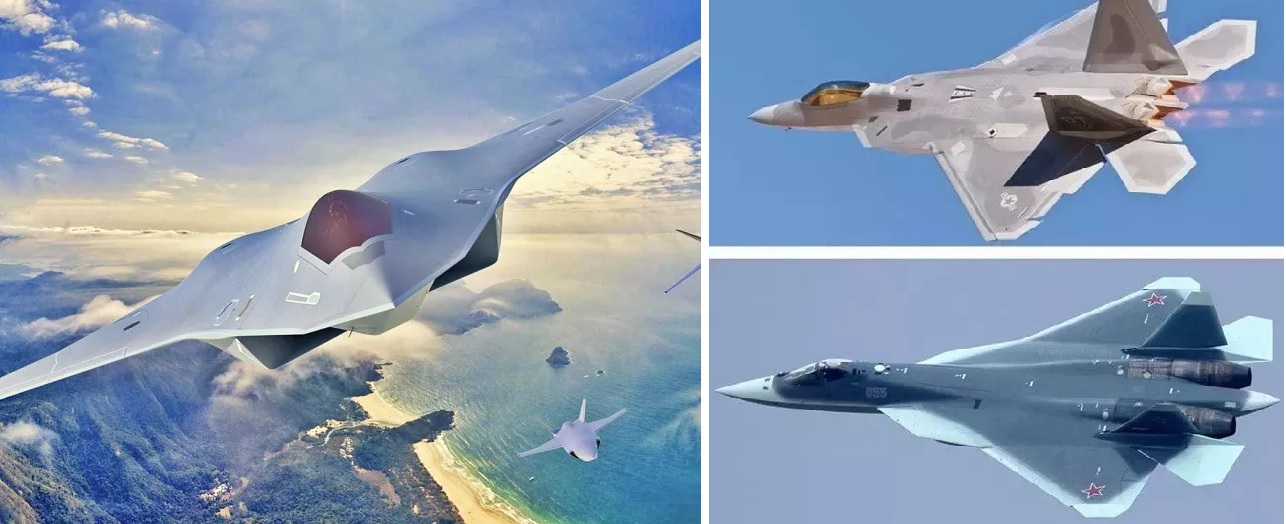 Key Differences Between 5th vs. 6th Generation Fighter Jets
Key Differences Between 5th vs. 6th Generation Fighter Jets
-
 What Would Happen if the USA Left NATO? A Comprehensive Analysis
What Would Happen if the USA Left NATO? A Comprehensive Analysis
-
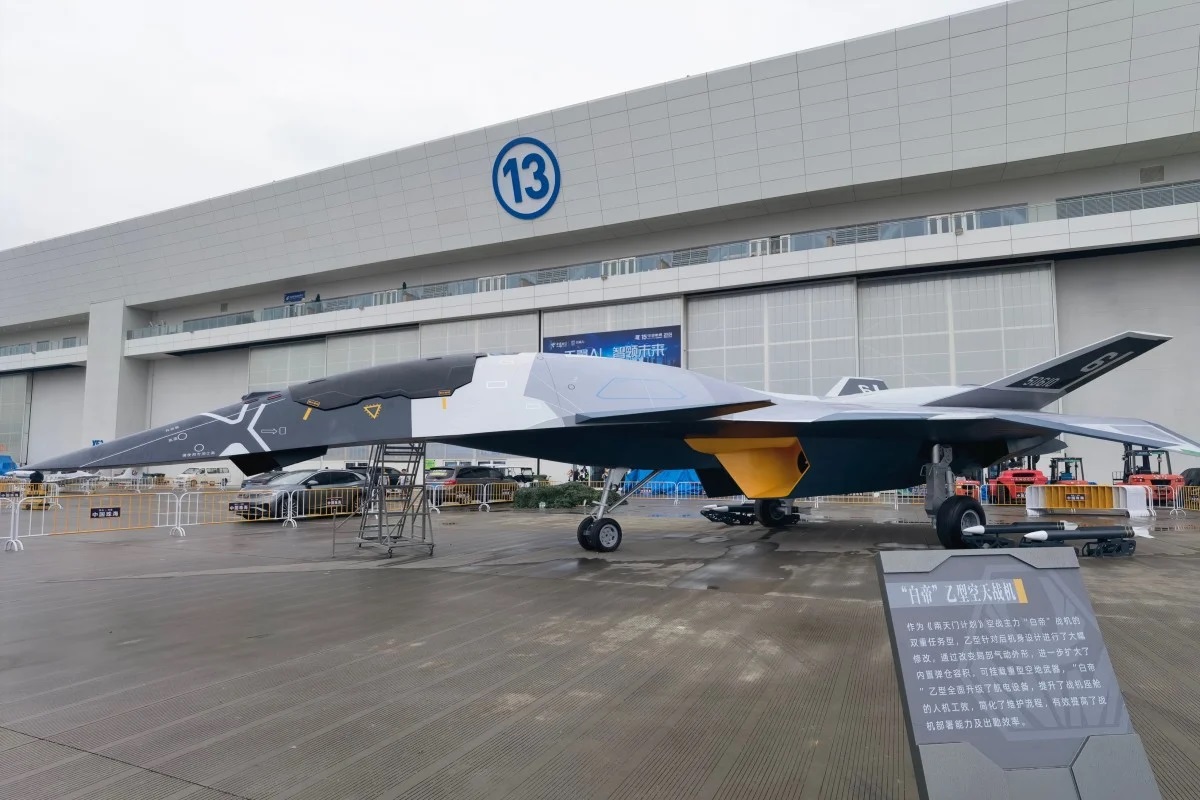 China Unveils the 6th-Generation “Baidi B-Type” Aerospace Fighter Concept
China Unveils the 6th-Generation “Baidi B-Type” Aerospace Fighter Concept
-
 China's Latest DF-31AG ICBM Test: A Strategic Leap in Global Missile Capabilities
China's Latest DF-31AG ICBM Test: A Strategic Leap in Global Missile Capabilities
-
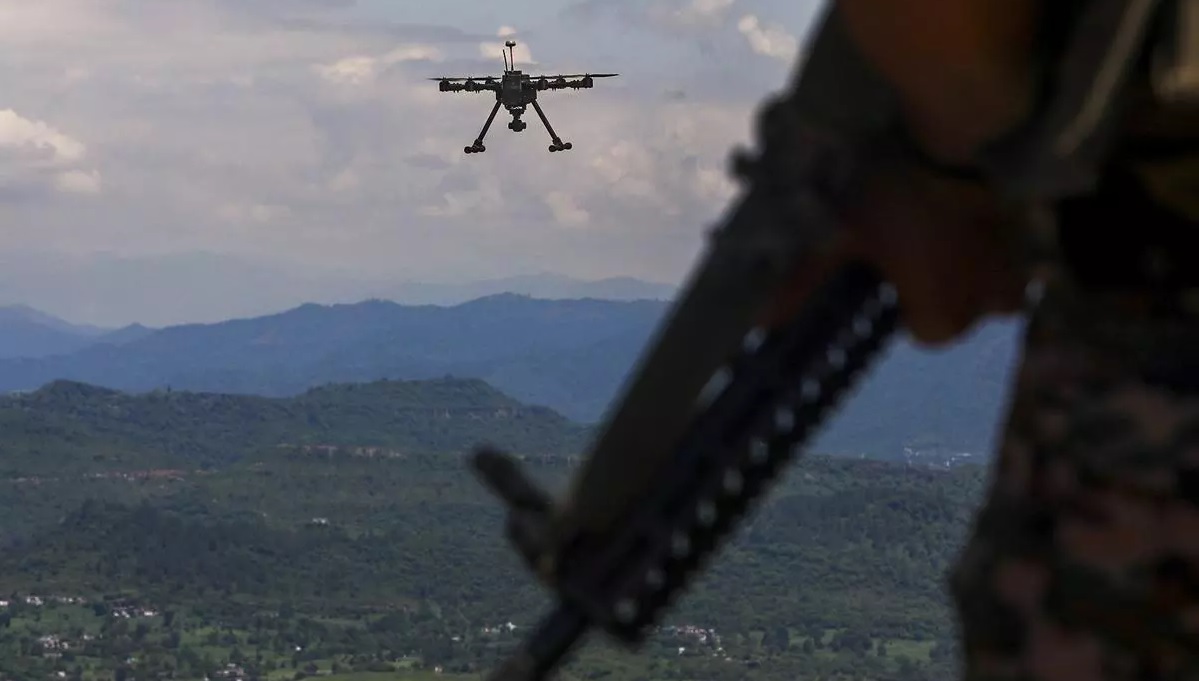 India's Defence Ministry Warns Against Chinese Parts in Military Drones Amid Security Concerns
India's Defence Ministry Warns Against Chinese Parts in Military Drones Amid Security Concerns
Top Trending in 4 Days
-
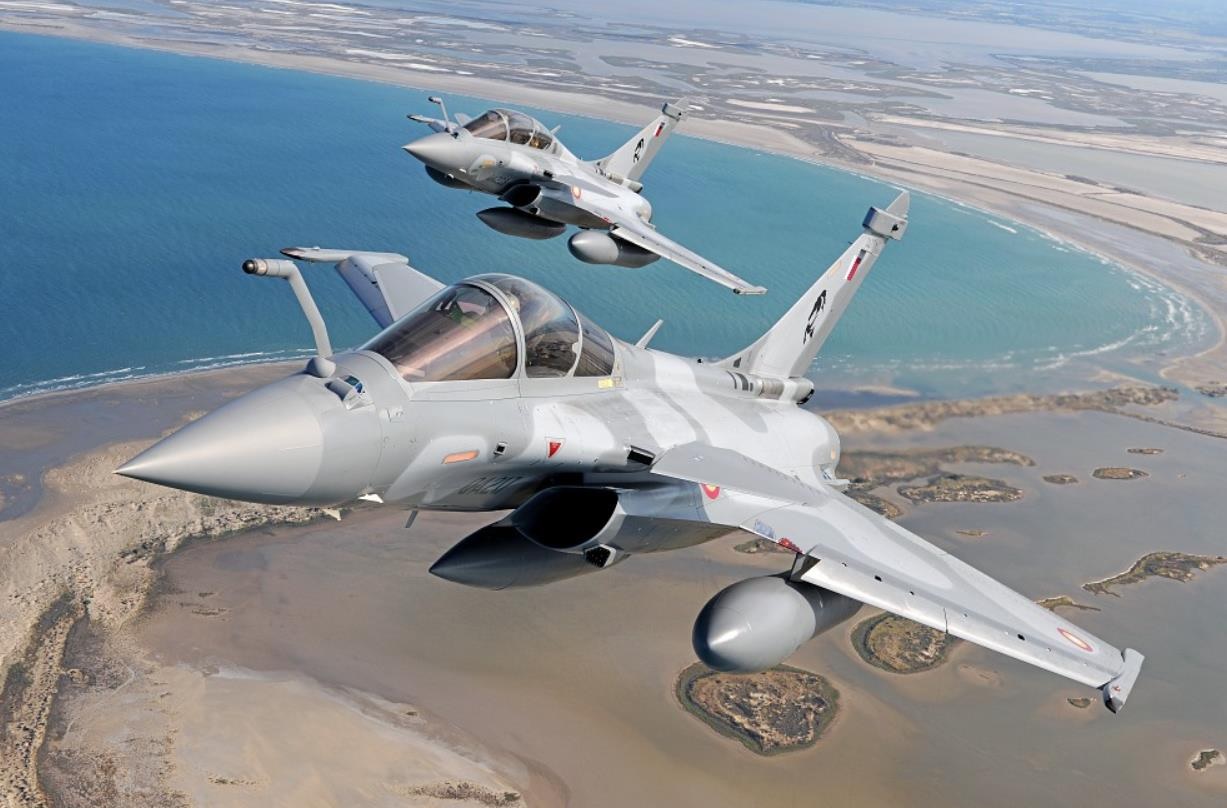 India Eyes 110 More Rafale Jets in Direct Deal with France, Fast-Tracking Air Force Modernisation
India Eyes 110 More Rafale Jets in Direct Deal with France, Fast-Tracking Air Force Modernisation
-
 Ukraine Unveils 'Alligator-9' Naval Drone with Laser-Firing
Ukraine Unveils 'Alligator-9' Naval Drone with Laser-Firing
-
 Duality AI Joins U.S. Army’s XM30 Program to Revolutionize Counter-Drone AI with Digital Twin Technology
Duality AI Joins U.S. Army’s XM30 Program to Revolutionize Counter-Drone AI with Digital Twin Technology
-
 Indian Army’s Digital Battlefield Revolution: Indigenous Electronic Warfare and AI at the Core of Modernisation
Indian Army’s Digital Battlefield Revolution: Indigenous Electronic Warfare and AI at the Core of Modernisation
-
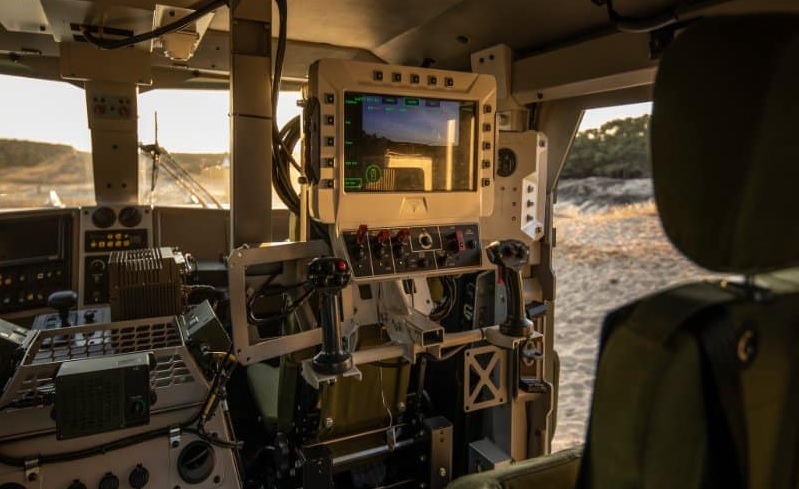 JCBL Group Seals Historic Defence Deal with Slovakia, Boosting India's Military Manufacturing Might
JCBL Group Seals Historic Defence Deal with Slovakia, Boosting India's Military Manufacturing Might
-
 Elon Musk’s SpaceX Leads Bid for Trump’s Ambitious “Golden Dome” Missile Shield
Elon Musk’s SpaceX Leads Bid for Trump’s Ambitious “Golden Dome” Missile Shield
-
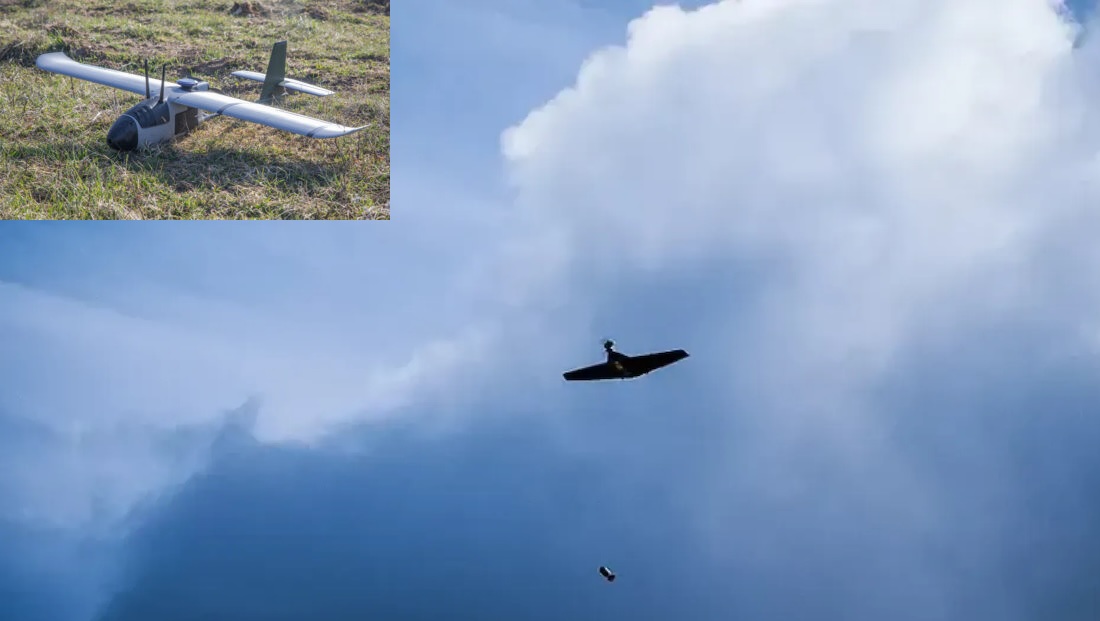 Ukraine Deploys New Indigenous B-1 Combat Drone to Strengthen Frontline Strikes
Ukraine Deploys New Indigenous B-1 Combat Drone to Strengthen Frontline Strikes
-
 Washington Approves $180 Million Engine Sale to Boost Israel’s Eitan Armored Vehicle Fleet
Washington Approves $180 Million Engine Sale to Boost Israel’s Eitan Armored Vehicle Fleet




